Keeley DDR Drive Delay Reverb – New Keeley Electronics Guitar Effect Pedal
If youre only going to grab one pedal make it the Keeley DDR Drive Delay Reverb unit. Its a pedal that covers all bases for most gigs. A small and compact chassis makes it a sturdy and practical grab-and-go style pedal that is bursting with quality! Keeleys years of pedal-making experience really show in this…
View more pedals made by: Keeley Electronics View all pedals of the type : Delay Guitar Effect Pedal New Reverb effect pedals Description
The Keeley DDR Drive Delay Reverb is in New condition and made by Keeley Electronics , it is a great Reverb Delay Drive DDR Keeley Guitar Effect Pedal- If youre only going to grab one pedal make it the Keeley DDR Drive Delay Reverb unit. Its a pedal that covers all bases for most gigs. A small and compact chassis makes it a sturdy and practical grab-and-go style pedal that is bursting with quality! Keeleys years of pedal-making experience really show in this tremendous effects box. Its a simple pedal to use with a ton of functionality. And theres a wealth of tone-enhancing options that are there to improve your guitars sound. Offering two drives delays and reverbs – as well as an FX loop that places FX before the WET channel – how much more do you really need? . Available from Just Pedals for only £ 184.25 A drive that keeps you going From a British-style crunch doused in chime to a dark and warm mid-centric ‘tweed’-style lead tone at the flick of a switch. The DDR is perfect for getting a little more out of your amp and expressing exceptional tone giving bags of character to your rhythm or lead playing. Sweet and lush modulation The modulation tones on offer are second to none. The reverb section gives a choice of either plate or spring reverbs. The plate is shimmery bright and clear – popular in studios of the ‘60s and ‘70s. Spring reverbs on the other hand are ‘twangy’ and percussive heard regularly in the music of The Beach Boys. These are classic reverb tones. You get both styles of delay. One side lends itself to the classic analogue style giving slight imperfection to the repeats with a darker tone. The digital side gives a crisp and clean delay totally flawless and perfect for genres like modern indie rock. Another interesting feature is the trial switch. This allows the trails of your reverbs and delays to fade out after the effect is disengaged which is great for transitioning between sections naturally. This coupled with a handy ‘blend’ knob will yield an organic-sounding sense of space without muddying up your guitars voice. A switchable effects loop for pure sound Switching the TRS switch on engages an effects loop which sits before the WET channel. This is useful if you want to add a boost for a little more volume or any modulation effects that you don’t want distortion playing into. This will give your effects a much cleaner and clearer sound. Complete sonic purity. Specifications Model Name: DDR Pedal Type: Combination Effect Drive Delay Reverb Drive Controls: Tone Drive Level Wet Controls: Blend Decay Time Power: 9v DC 20mA (No battery) Switching: True Bypass/Buffered Country of Origin: USA
About Keeley Electronics
We have one of the largest online selection of new and used Keeley Electronics music gear. If you are looking for your next pedal, we will have it online at JustPedals with fast delivery direct to you at home. Every item on the JustPedal menu is delivered by sellers to all areas of the USA & UK.
Keeley Electronics is a prominent American manufacturer of guitar effects pedals, founded in 2001 by Robert Keeley. The company has established a strong reputation in the boutique pedal industry through its focus on precision engineering and high-quality audio performance.
Keeley is renowned for its active and passive pedal designs, including iconic models like the Katana Blues Driver, the Compressor Plus, and the Delay Workstation. Keeley’s pedals are distinguished by their meticulous craftsmanship, innovative circuit designs, and reliability.
The company’s products often incorporate advanced features such as flexible EQ controls, analogue and digital hybrid processing, and extensive tone-shaping capabilities, making them favoured by both professional and amateur guitarists seeking exceptional sound quality and versatile performance.
Delay
A delay pedal is a type of guitar effects pedal used to create echoes or repetitions of the original guitar signal. It achieves this by capturing the input signal, delaying it by a specified amount of time, and then playing it back. Delay pedals are versatile tools that can add depth, dimension, and ambience to guitar tones, and they are widely used across various music genres, from rock and blues to ambient and experimental.
Here are the key features and functions of a delay pedal:
1. **Delay Time**: This control adjusts the amount of time between the original signal and the delayed signal. Longer delay times result in more pronounced echoes, while shorter delay times produce tighter, slapback-style effects.
2. **Feedback (or Regeneration)**: The feedback control determines the number of repeats or echoes produced by the delay pedal. Increasing the feedback setting results in multiple repeats, creating a cascading effect of echoes. Careful adjustment of the feedback control allows you to dial in the desired amount of repetition without overwhelming the original signal.
3. **Mix (or Blend)**: The mix control adjusts the balance between the original (dry) signal and the delayed (wet) signal. Higher mix settings emphasize the delayed signal, while lower mix settings maintain the clarity and integrity of the original signal. This control allows you to blend the delayed signal with the dry signal to achieve the desired balance and level of effect.
4. **Tap Tempo**: Some delay pedals feature a tap tempo function that allows you to set the delay time by tapping a button in rhythm with the music. This feature is particularly useful for synchronizing the delay effect with the tempo of a song or performance.
5. **Modulation**: Many delay pedals include modulation controls that add modulation effects, such as chorus or vibrato, to the delayed signal. Modulation can add warmth, depth, and movement to the delay effect, creating a more immersive and dynamic sound.
Delay pedals offer several creative uses and applications for guitarists:
– **Spatial Effects**: By adjusting the delay time, feedback, and mix controls, delay pedals can create spacious, atmospheric effects that simulate the sound of a room, hall, or cavern. These effects add depth and dimension to guitar tones, creating a sense of space and ambience.
– **Rhythmic Patterns**: By syncing the delay time with the tempo of a song using tap tempo or preset rhythmic subdivisions, delay pedals can produce rhythmic patterns and textures that enhance the groove and feel of a performance.
– **Texture and Movement**: By introducing modulation effects to the delayed signal, delay pedals can add texture, movement, and character to guitar tones. Modulated delays create swirling, shimmering effects that enrich the sound and captivate the listener’s ear.
Overall, delay pedals are versatile tools that offer a wide range of creative possibilities for guitarists. Whether used subtly to add depth and ambience or used more prominently to create rhythmic patterns and textures, delay pedals can enhance your guitar tone and inspire new musical ideas.
Guitar Effect Pedal
A guitar pedal, also known as an effects pedal, is a device used by guitarists to alter the sound of their instrument in various ways. These pedals are typically small, foot-operated units that are connected in a signal chain between the guitar and the amplifier. They can modify the guitar’s tone, pitch, and dynamics by applying different effects such as distortion, reverb, delay, chorus, and more. Guitar pedals come in both analog and digital formats, and they allow musicians to create a wide range of sounds, enhancing their musical expression and creativity. They are essential tools for guitarists in genres ranging from rock and blues to jazz and electronic music.
New
Just New products for sale, unused, and in their original packaging. They come with a protected seller guarantee and include manufacturer warranties. Read more for additional details.
Reverb
Reverb, short for reverberation, is a fundamental audio effect that simulates the sound reflections and decay that occur in physical spaces, such as rooms, halls, or chambers. It adds depth, dimension, and ambiance to audio signals, creating a sense of space and realism. In the context of guitar effects, a reverb pedal is a device that generates and applies reverb effects to the guitar signal. Here’s how reverb pedals work and some common features:
1. **Reverb Types**: Reverb pedals typically offer different types of reverb effects, including spring reverb, plate reverb, hall reverb, room reverb, and ambient or modulated reverb. Each type emulates the characteristics of different physical spaces and has its own unique sound and character.
2. **Controls**: Reverb pedals feature various controls for adjusting parameters such as decay time, pre-delay, damping, tone, and mix. Decay time controls the length of the reverb tail or decay, while pre-delay adjusts the time between the original signal and the onset of the reverb. Damping controls the high-frequency content of the reverb, simulating absorption in the virtual space. Tone controls the overall tonal character of the reverb, and mix adjusts the balance between the dry (original) and wet (affected) signals.
3. **Modulation**: Some reverb pedals include modulation effects such as chorus or tremolo that modulate the reverb tail, adding movement and depth to the sound. Modulation can create lush, swirling textures and enhance the overall ambiance of the reverb effect.
4. **Trail Function**: Many reverb pedals offer a trail function, which allows the reverb tail to continue decaying naturally when the effect is bypassed. This prevents abrupt cutoffs and ensures smooth transitions between affected and unaffected signal states.
5. **Spring Tank vs. Digital Reverb**: Reverb pedals can use either spring tanks or digital processing to generate reverb effects. Spring reverb pedals emulate the sound of vintage spring reverb units found in amplifiers, while digital reverb pedals use algorithms to simulate a wide range of reverb types and settings.
6. **Size and Form Factor**: Reverb pedals come in various sizes and form factors, from compact mini pedals to larger, feature-rich units. Choose a pedal size and form factor that fits your pedalboard layout and offers the desired features and controls for your needs.
Reverb pedals are widely used in various music genres, including rock, blues, jazz, ambient, and experimental music. They can add depth, warmth, and atmosphere to guitar tones, enhance the spatial imaging of recordings, and create immersive soundscapes for performances. Whether used subtly to add a touch of room ambiance or dialed in for dramatic, expansive effects, reverb pedals are essential tools for shaping guitar tones and creating captivating sounds.
£168.92
Decay: decay controls the amount of time It takes for the reverberated sound to disappear. Ours provides a range from a realistic, close-quarters reverberated dimension to a walk-away-and-come-back signal of complex, still-ringing musical reflections The Keeley Aurora slap back setting provides you with a sufficient range of time, From zero milliseconds to 100 milliseconds, ample time considering a pedal-board footprint This small Warmth: dial up the warmth. Opposite to most tone controls, ours increases the warmth, as it is a dampening control. Its brightest setting is when completely dialed down Blend: blend will take your 100% analog dry signal and blend in the reverb, from just the slightest mix of wet to much more The toggle switch: the three most popular reverb styles room, plate, and hall
£137.45
Spring Reverb Black Face Trem-n-Verb Fugue Organ Setting
£170.51
Synth Wave Generator – Create fuzzed-out, single note synth sounds Reverse Attack – Volume Swell Effect – put your guitar in slow gear! Chaos Switch – change dimensional triggering and octaves and stuff Filter – shape the EQ and tone of your fuzz wave Wave Selector – change wave modes on the fly with your foot!
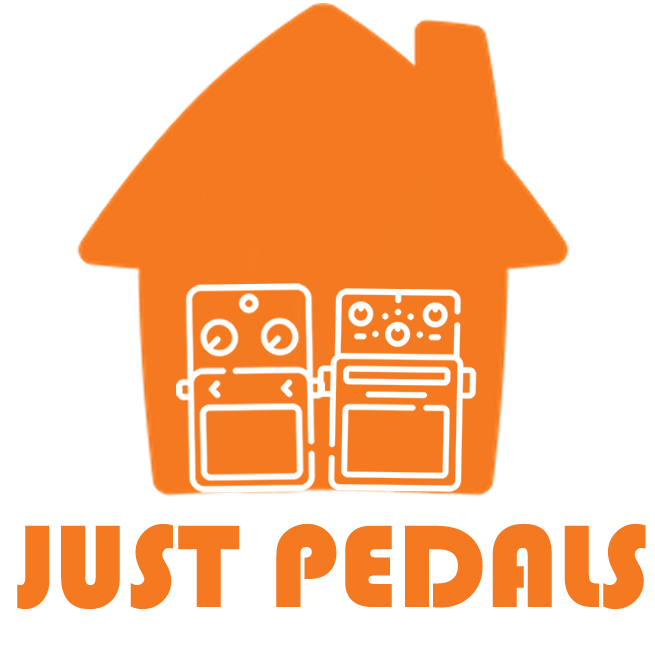

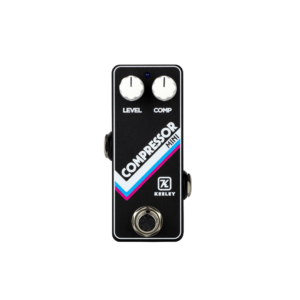
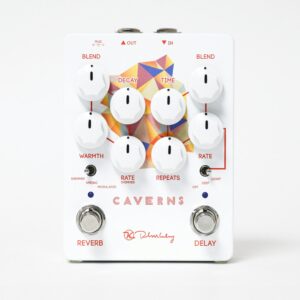
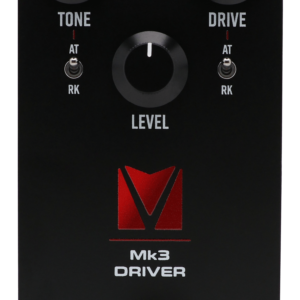
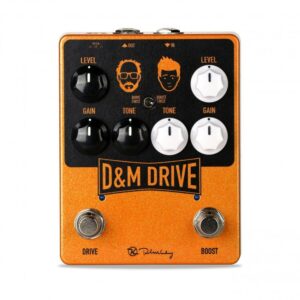
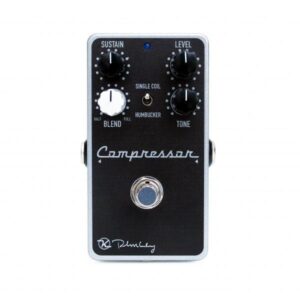
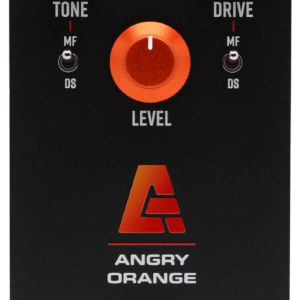
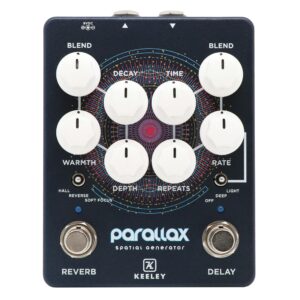
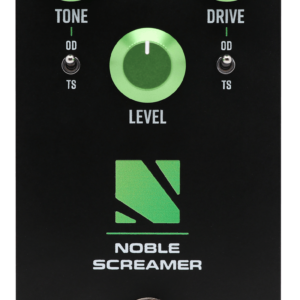
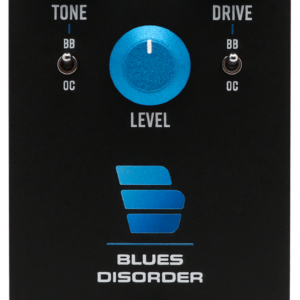
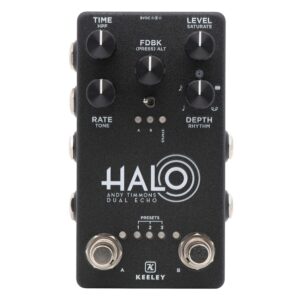



Reviews
There are no reviews yet.